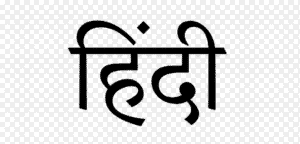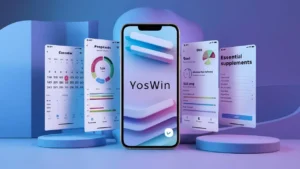अरे यार, क्या तुम भी उन लोगों में से हो जो हर महीने salary का इंतजार करते रहते हैं?
- Robert Kiyosaki कौन हैं?
- Book का Main Message क्या है?
- 💖 You Might Also Like
- Assets vs Liabilities – सबसे Important Concept
- Asset क्या है?
- Liability क्या है?
- Middle Class की सबसे बड़ी गलती
- 4 Types of People – Cashflow Quadrant
- E – Employee (नौकरी करने वाले)
- S – Self-Employed (खुद का business)
- B – Business Owner (बड़े business owner)
- I – Investor (निवेशक)
- Financial Education की कमी
- School में क्यों नहीं सिखाते Financial Education?
- Parents भी नहीं जानते
- ✨ More Stories for You
- पैसे के बारे में सही सोच
- गलत सोच:
- सही सोच:
- Real Estate Investment – Rich Dad का Formula
- OPM – Other People’s Money
- Example:
- Tax की समझ – अमीर कम Tax क्यों देते हैं?
- Employee का Tax Structure:
- Business Owner का Tax Structure:
- 🌟 Don't Miss These Posts
- Financial Intelligence के 4 Pillars
- 1. Accounting
- 2. Investing
- 3. Understanding Markets
- 4. Law
- Rich Dad के Top 10 Lessons
- 1. अमीर Assets खरीदते हैं, गरीब Expenses
- 2. Financial Literacy सबसे Important
- 3. Mind Your Own Business
- 4. Corporations की Power
- 5. History of Taxes
- 6. Invent Money
- 7. Work to Learn, Don’t Work for Money
- 8. Overcoming Obstacles
- 9. Getting Started
- 10. Still Want More?
- Practical Implementation – कैसे Start करें?
- Step 1: Financial Education
- Step 2: Emergency Fund
- Step 3: Start Investing
- Step 4: Build Additional Income
- Common Mistakes to Avoid
- गलती 1: House को Asset समझना
- गलती 2: Job Security का भरोसा
- गलती 3: Credit Cards का गलत इस्तेमाल
- गलती 4: Financial Education को ignore करना
- गलती 5: Instant Gratification
- Success Stories – Real Examples
- McDonald’s का Example
- Personal Experience
- Frequently Asked Questions
- क्या यह book सिर्फ Americans के लिए है?
- कितना पैसा चाहिए शुरुआत के लिए?
- Real Estate में invest करना safe है?
- Job छोड़ना जरूरी है?
- कितना time लगेगा financially free होने में?
- Stock market risky है क्या?
- Business start करना जरूरी है?
- Parents agree नहीं करते new ideas के साथ?
- Next Steps – Action Plan
- इस Month करो:
- अगले 3 Months में:
- अगले 1 Year में:
- Final Thoughts
पैसे की समस्या से परेशान हो?
या फिर सोचते रहते हो कि अमीर लोग कैसे अमीर बनते हैं?
Rich Dad Poor Dad की यह समरी तुम्हारी सारी confusion clear कर देगी।
मैं Robert Kiyosaki की इस famous book को बिल्कुल सीधी भाषा में explain करूंगा।
Robert Kiyosaki कौन हैं?
Robert Kiyosaki एक American businessman और author हैं।
उनके दो पिता थे – एक real dad (Poor Dad) और एक best friend के dad (Rich Dad)।
Poor Dad – highly educated, government job, financial problems
Rich Dad – 8th grade dropout, business owner, financially free
यही contrast उनकी पूरी जिंदगी बदल गया।
Book का Main Message क्या है?
सबसे बड़ी बात यह है:
School हमें employee बनना सिखाता है, boss बनना नहीं।
हमारे parents हमेशा कहते हैं:
- अच्छी पढ़ाई करो
- अच्छी job लो
- secure रहो
लेकिन यह formula अब काम नहीं करता।
💖 You Might Also Like
Assets vs Liabilities – सबसे Important Concept
Asset क्या है?
Asset वो चीज है जो तुम्हारी pocket में पैसा डालती है।
Examples:
- Rental property
- Stocks/shares
- Business
- Bonds
- Royalties
Liability क्या है?
Liability वो चीज है जो तुम्हारी pocket से पैसा निकालती है।
Examples:
- घर का loan (EMI)
- Car loan
- Credit card debt
- Personal loans
Middle Class की सबसे बड़ी गलती
Middle class लोग घर को asset समझते हैं।
लेकिन सच यह है:
अगर तुम उस घर में रहते हो, तो वो liability है।
क्यों?
क्योंकि हर महीने EMI, maintenance, taxes pay करना पड़ता है।
4 Types of People – Cashflow Quadrant
Robert Kiyosaki ने लोगों को 4 categories में बांटा है:
E – Employee (नौकरी करने वाले)
- Fixed salary
- Boss के लिए काम करते हैं
- Time के बदले पैसा मिलता है
- Job security चाहिए
S – Self-Employed (खुद का business)
- Doctor, lawyer, consultant
- खुद के लिए काम करते हैं
- अगर काम बंद, तो income बंद
B – Business Owner (बड़े business owner)
- System बनाते हैं
- दूसरे लोग उनके लिए काम करते हैं
- Passive income generate करते हैं
I – Investor (निवेशक)
- पैसे से पैसा बनाते हैं
- Assets में invest करते हैं
- Financial freedom प्राप्त करते हैं
Goal यह है कि E और S quadrant से निकलकर B और I quadrant में जाना है।
Financial Education की कमी
School में क्यों नहीं सिखाते Financial Education?
क्योंकि school system industrial age में बना था।
उस time का goal था:
- Obedient workers तैयार करना
- Rules follow करने वाले employees बनाना
- Creativity को suppress करना
Parents भी नहीं जानते
हमारे parents भी same system से आए हैं।
वो भी यही सिखाते हैं:
“पढ़ लिख कर नौकरी करो।”
लेकिन यह approach अब outdated है।
✨ More Stories for You
पैसे के बारे में सही सोच
गलत सोच:
- “पैसा सब कुछ नहीं है”
- “अमीर लोग बुरे होते हैं”
- “हमारे पास पैसा नहीं है”
सही सोच:
- “मैं यह कैसे afford कर सकता हूं?”
- “पैसा एक tool है”
- “अमीर बनना moral है अगर value create करते हैं”
Real Estate Investment – Rich Dad का Formula
OPM – Other People’s Money
Rich Dad का formula था:
कम पैसा down payment करो
Bank loan लो
Property rent पर दो
Rent से loan चुकाओ
Property appreciate होगी
Example:
- Property price: 50 लाख
- Down payment: 10 लाख (अपना पैसा)
- Bank loan: 40 लाख
- Monthly EMI: 35,000
- Rent income: 40,000
- Monthly profit: 5,000
यह है OPM का power।
Tax की समझ – अमीर कम Tax क्यों देते हैं?
Employee का Tax Structure:
- Salary मिलती है
- Tax कट जाता है
- बचा हुआ पैसा खर्च करते हैं
Business Owner का Tax Structure:
- Income आती है
- Business expenses deduct करते हैं
- बचे हुए amount पर tax
- Net income बचती है
यही है legal tax advantage।
🌟 Don't Miss These Posts
Financial Intelligence के 4 Pillars
1. Accounting
- Financial statements पढ़ना
- Assets vs Liabilities समझना
- Cash flow analyze करना
2. Investing
- Different investment options
- Risk vs Return
- Diversification
3. Understanding Markets
- Supply and demand
- Market cycles
- Economic indicators
4. Law
- Tax benefits
- Corporate structures
- Legal protection
Rich Dad के Top 10 Lessons
1. अमीर Assets खरीदते हैं, गरीब Expenses
जब अमीर के पास extra पैसा आता है:
- Stocks में invest करते हैं
- Property खरीदते हैं
- Business start करते हैं
जब गरीब के पास extra पैसा आता है:
- नई car लेते हैं
- expensive gadgets खरीदते हैं
- luxury items पर खर्च करते हैं
2. Financial Literacy सबसे Important
पैसे कमाना आसान है।
पैसे को manage करना मुश्किल है।
इसीलिए lottery winners फिर से गरीब हो जाते हैं।
3. Mind Your Own Business
Job करो, लेकिन side में अपना business भी build करो।
Examples:
- Part-time consulting
- Online business
- Freelancing
- Investment portfolio
4. Corporations की Power
Rich लोग अपने assets को corporation के नाम पर रखते हैं।
Benefits:
- Tax savings
- Legal protection
- Professional image
- Business deductions
5. History of Taxes
पहले केवल अमीरों से tax लिया जाता था।
अब middle class सबसे ज्यादा tax देती है।
यह system को समझना जरूरी है।
6. Invent Money
अमीर लोग opportunities create करते हैं।
वो wait नहीं करते कि कोई job दे दे।
Examples:
- Problem solve करके business बनाना
- Market gaps find करना
- Innovation करना
7. Work to Learn, Don’t Work for Money
Young age में money से ज्यादा skills पर focus करो।
Important Skills:
- Sales
- Marketing
- Communication
- Leadership
- Financial management
8. Overcoming Obstacles
Common Fears:
- Money lose करने का डर
- Failure का डर
- Criticism का डर
- Comfort zone छोड़ने का डर
Solution: Education और experience से fear overcome करो।
9. Getting Started
Action Steps:
- Strong reason/purpose ढूंढो
- Daily choices consciously बनाओ
- Friends को carefully choose करो
- Different investment strategies सीखो
- Pay yourself first
- Brokers को अच्छी तरह pay करो
- Return on investment calculate करो
- Assets से luxury buy करो
- Heroes को ढूंढो और follow करो
- Teaching से learning होती है
10. Still Want More?
Advanced Concepts:
- Multiple streams of income
- International investments
- Sophisticated tax strategies
- Building business systems
Practical Implementation – कैसे Start करें?
Step 1: Financial Education
- Books पढ़ो
- Courses लो
- Mentors ढूंढो
- Financial statements समझो
Step 2: Emergency Fund
- 6 months का expense save करो
- Liquid fund में रखो
- Touch मत करो
Step 3: Start Investing
- SIP से start करो
- Mutual funds में invest करो
- Stock market सीखो
- Real estate explore करो
Step 4: Build Additional Income
- Side hustle start करो
- Freelancing करो
- Passive income streams बनाओ
Common Mistakes to Avoid
गलती 1: House को Asset समझना
Self-occupied house liability है, asset नहीं।
गलती 2: Job Security का भरोसा
कोई job permanently secure नहीं है।
गलती 3: Credit Cards का गलत इस्तेमाल
Credit cards से liabilities मत खरीदो।
गलती 4: Financial Education को ignore करना
Paisa kamana सीखो, सिर्फ पढ़ाई पर depend मत रहो।
गलती 5: Instant Gratification
Short-term pleasure के लिए long-term financial health sacrifice मत करो।
Success Stories – Real Examples
McDonald’s का Example
Robert Kiyosaki ने MBA students से पूछा:
“McDonald’s के business में कौन सा part सबसे important है?”
Students ने कहा: “Hamburgers बनाना।”
Robert का जवाब: “नहीं, Real Estate!”
McDonald’s actually एक real estate company है जो hamburgers भी बेचती है।
हर franchise location prime real estate पर होती है।
Personal Experience
मैंने खुद यह formula try किया है।
2 साल पहले मैंने एक small property में invest किया।
Down payment: 5 लाख
Bank loan: 20 लाख
Rent income: 18,000/month
EMI: 15,000/month
Monthly profit: 3,000
Plus property की value भी बढ़ी है।
यह है compound wealth building।
Frequently Asked Questions
क्या यह book सिर्फ Americans के लिए है?
नहीं, principles universal हैं। Tax laws अलग हो सकते हैं, लेकिन concepts same हैं।
कितना पैसा चाहिए शुरुआत के लिए?
1000 रुपए से भी start कर सकते हैं। SIP से mutual funds में invest करो।
Real Estate में invest करना safe है?
कोई भी investment 100% safe नहीं। Education और research जरूरी है।
Job छोड़ना जरूरी है?
नहीं! Job continue करो, side में wealth building करो।
कितना time लगेगा financially free होने में?
यह depend करता है income, expenses, और investment strategy पर। Generally 10-15 years।
Stock market risky है क्या?
Short-term में risky है, long-term में wealth creator है। SIP through mutual funds safe approach है।
Business start करना जरूरी है?
Business सिर्फ एक option है। Investment भी wealth create कर सकती है।
Parents agree नहीं करते new ideas के साथ?
धीरे-धीरे convince करो। Results दिखा कर proof दो।
Next Steps – Action Plan
इस Month करो:
- 1 financial book पढ़ो
- Monthly budget बनाओ
- Emergency fund start करो
- 1 SIP start करो (₹1000 भी चलेगा)
अगले 3 Months में:
- Financial statements पढ़ना सीखो
- Different investment options research करो
- Side income opportunity ढूंढो
- Network बनाओ financially aware लोगों का
अगले 1 Year में:
- Investment portfolio build करो
- Real estate market study करो
- Business idea develop करो
- Tax planning शुरू करो
Final Thoughts
Rich Dad Poor Dad ने millions of lives change की है।
Key यह है कि सिर्फ पढ़ना काफी नहीं है।
Action लेना जरूरी है।
Small steps भी बड़े results लाते हैं।
सबसे important बात:
Financial freedom एक destination नहीं, journey है।
हर day थोड़ा सा progress करते रहो।
Rich Dad Poor Dad का यह समरी हिंदी में तुम्हें financial literacy की strong foundation देता है।
Remember: Knowledge is power, but applied knowledge is wealth.
अब action लेने का time है!
क्या यह article helpful लगा? Comment में बताओ कि तुमने कौन सा step पहले लेने का plan बनाया है। अगर कोई specific question है तो पूछ सकते हो – main हमेशा help करने को ready हूं!
















